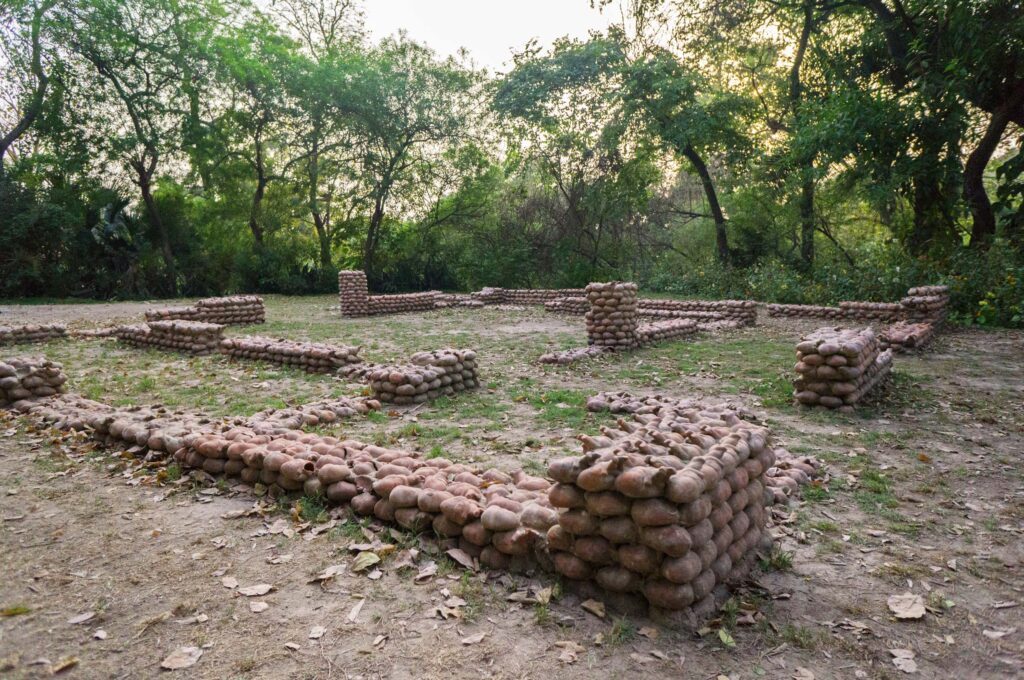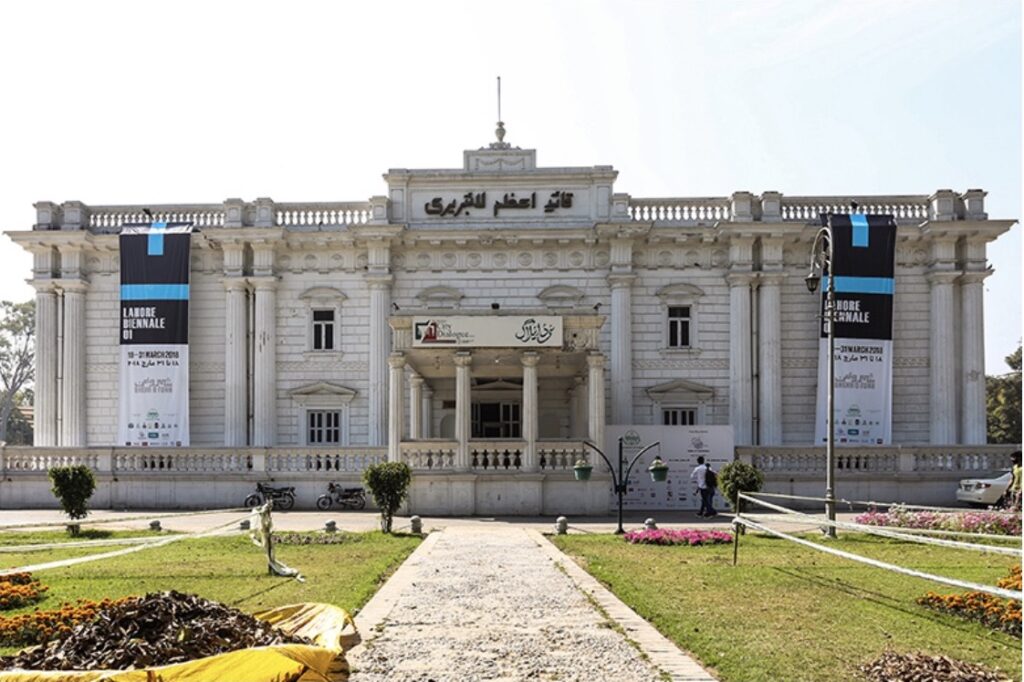Bagh-e-Jinnah
Originally constructed as a botanical garden, covering 172 acres of land, Lawrence Gardens (now Bagh-e-Jinnah), was built under British colonial rule in Lahore in 1849. Lawrence Gardens was modelled after the historic Kew Gardens in London that served as a collecting and breeding ground for plant specimens from all over the world at the height of the British Empire. Site specific projects for LB01 at Bagh- e-Jinnah are cognizant of this history. They offer a counter narrative or make visible presuppositions that underlie colonial optics and seeing, as well as the arrangement of the landscape. Together these works present an engagement with nature, that harkens to the densely layered past of the site, yet also incorporate markers of the present era. Wardha Shabbir’s large scale installation juxtaposes a two- dimensional landscape form against the British-style layout of the garden. Trained as a miniature painter, she extends into the garden an aesthetic and a gesture that draws from the Indo-Persian engagement with nature as depicted in historic miniature paintings. David Alesworth’s audio intervention within the park originates from the artist’s ongoing research into the genesis of the garden, whose purpose was to facilitate the grooming of English plants and fruit trees for future cultivation in the newly acquired territories of British Indian Punjab. His work interweaves local voices with sound recordings acquired from the archives of the Kew Gardens, thereby questioning this historical narrative. Ali Kazim’s installation functions as a quasi-archeological site wherein the fragile clay heart sculptures suggest affect and belonging, and may point to restrictions placed upon public expressions of love. The archaeological site as a modern system of survey and inquiry came into existence in the 19th century in South Asia, but here Kazim attunes the site to evoke buried memories and fragile attachments in a contemporary context. Mehreen Murtaza creates an allegorical soundscape by tapping into the secret chemical and biological language shared between trees. The works asks us to reconsider our own relation to nature and to imagine a living and pulsing universe beyond the domain of the human. Noor Ali Chagani’s installation employs re-used terracotta bricks that already bear traces or marks from the kiln. These are bricks salvaged from temporary constructions, and also bear visible traces of the bricks’ past renditions and lives. They bring to the garden varied experiences of constructions inhabited and demolished into the garden, returning the damaged baked clay back to a state of nature.
Artists
Ali Kazim
Mehreen Murtaza
David Alesworth
Noor Ali Chagani
Wardha Shabbir
Parks and Horticulture Authority

